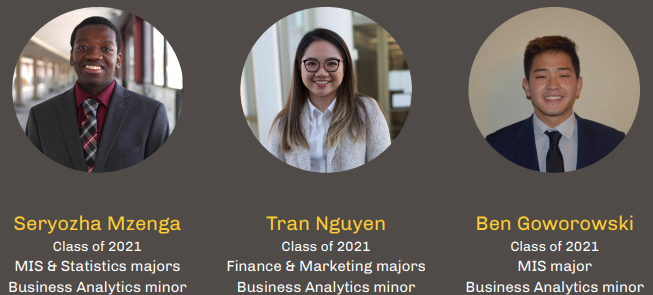
The Fight for Food Access
Tuesday, June 22, 2021
Throughout the state of Minnesota, one out of nine residents is living under the stress of hunger. There are resources in place to help those in need, such as the Supplemental Nutrition Assistance Program (SNAP), but many of those programs go underused. In fact, in Minnesota, the gap between eligibility and access is 19 percent, meaning that of the people who are eligible for SNAP, only 81 percent access its services.
In order to help bridge that gap, Second Harvest Heartland, a Twin Cities-based food bank, partnered with the Carlson School on an experiential learning project that tasked undergraduate students with developing a model to help the organization better understand where in the state these resources go underutilized. With that information, the organization can adjust its marketing and outreach strategies accordingly.
“This work has far-reaching implications,” said Mesa Siebert, the SNAP outreach manager at Second Harvest Heartland. “It’s not only helpful for us and other community organizations, but it helps the people who are food insecure and who are very much living paycheck-to-paycheck at the most foundational level. This is a tool that can help reach those people and allow us to better assist them.”
Second Harvest Heartland worked with students in the inaugural Analytics in Action course taught by Senior Lecturer Ken Reily and Ellen Trader, the managing director of the Carlson Analytics Lab. During the seven-week course, student teams of three, created unique models to tackle this challenge.
The work of Ben Goworowski, Seryozha Mzenga, and Tran Nguyen, all ‘21 BSB, stood out for its innovative use of the available data and showcasing its model through real-life examples.
"Based on the data tables, we were able to potentially show where the gaps in SNAP eligibility and enrollment are and where Second Harvest Heartland could prioritize more of their resources,” Mzenga says.
Using ZIP code and county-level data, the team established that across the entire area that Second Harvest Heartland serves, 15.8 percent of the population is eligible for SNAP. Of that, only 36.7 percent are currently accessing the program. With that baseline, individual counties can be compared.
In one example, the team studied Chisago County. They found that 12.8 percent of the county is SNAP-eligible. However, only 29.1 percent of those who are eligible are using those resources. Since that number is lower than the 36.7 percent average, Second Harvest Heartland can increase its efforts in Chisago County to close that gap.
After seeing the findings, Siebert says they almost immediately presented the work to the Minnesota Department of Human Services to show how important the state’s data could be to solving issues related to food insecurity.
“We wanted to get this on their radar right away,” Siebert says. “If they were able to share some of this data with us going forward, we would be able to act on it and start strategizing about where our resources and the state’s resources are best spent. We’d be in a better place to respond to these gaps we’re seeing.”
For the students, the takeaways were major. The project gave them a chance to work with real clients, professionally present their findings, and see how their data can have a real-world impact on people’s lives.
“One thing I really appreciate about the Carlson School is that you get to work on real projects instead of made up stuff in the classroom,” Nguyen says. “This project showed me a lot of the steps, research, and analysis that I’m going to need in my own career. So this was a very rewarding experience.”
